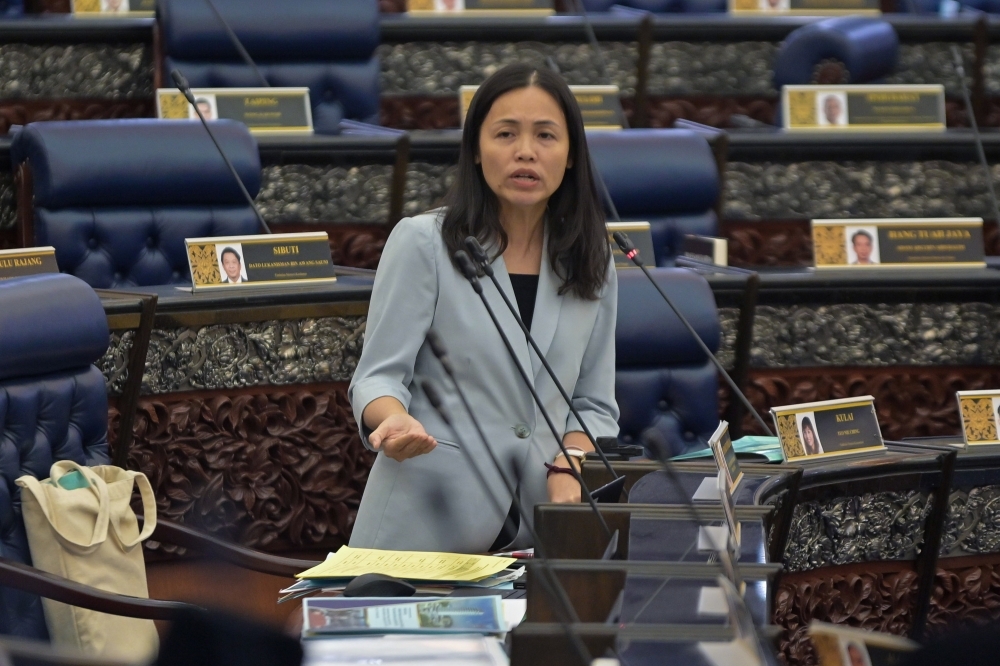U Mobile not compelled to use Huawei in Malaysia’s 5G rollout, clarifies ART stance

KUALA LUMPUR, Nov 24 — Deputy Communications Minister Teo Nie Ching today refuted claims that U Mobile would be forced to use Huawei technology or any other company’s tools in Malaysia’s second 5G network rollout.
She said neither the government nor the Malaysian Communications and Multimedia Commission (MCMC) had issued such instructions.
“I appreciate the opportunity to clarify matters and the government’s stance. There are no instructions from the MCMC or the Communications Ministry to use or not use Huawei or any other company’s technology after we signed The Agreement on Reciprocal Trade (ART) with the United States,” she told the Dewan Rakyat today.
“If we keep making accusations outside the Dewan Rakyat without facts it becomes irresponsible,” she added.
Teo was responding to Ayer Hitam MP Wee Ka Siong, who alleged that U Mobile would be compelled to use Huawei technology in Malaysia’s second 5G network rollout following the ART with the US.
Wee said that under the agreement, Malaysia would have to follow the US if it imposed sanctions on China, Iran, or Russia, despite these countries being important trade partners. He pointed to Article 5.2.1, which requires Malaysia to negotiate with the US if intending to purchase satellites or communications technology, potentially affecting the country’s autonomy in telecommunications procurement.
In April, U Mobile announced it would use infrastructure technology from China’s Huawei Technologies and ZTE to roll out Malaysia’s second 5G network.
U Mobile chairman Tan Sri Vincent Tan said Huawei and ZTE were chosen due to their “proven global deployment track record”. He said Huawei would oversee 5G deployment in Peninsular Malaysia, while ZTE would manage East Malaysia, without specifying the deal’s value.
The US has banned the sale and import of new communications equipment from five Chinese companies, including Huawei and ZTE, over national security concerns since 2022. The list also includes Hikvision, Dahua, and Hytera, which manufacture video surveillance equipment and two-way radio systems.
Social media age verification
On another note, Teo clarified that the government’s proposal to restrict social media access to those under 16 differs from Australia’s model, as it requires age verification rather than mere age assurance.
She explained that Australia relies on algorithms to estimate age based on interactions and content, without requiring documents or e-KYC (electronic Know-Your-Customer).
“In Australia, you don’t need to show your passport, IC, or MyDigital ID. The platform just studies what you post to estimate your age — that is age assurance,” she said.
“What we want here is age verification. That means we need a process like e-KYC. Verification requires proof, not estimation. It’s a big difference,” she added.
Teo noted that many platforms already verify certain accounts, such as influencers or public figures with blue ticks.
“If we can verify influencers and public figures, why can’t we verify age before someone opens an account?” she asked. “This is about safety, not convenience.”
The government hopes platforms will implement e-KYC at account creation so children cannot bypass restrictions, with further discussions with industry players to determine rollout timing.
Some MPs questioned whether stricter rules could see Malaysia go further than Australia and penalise parents who allow minors access to social media. Teo said the government is not considering punishment at this stage.
“Australia does not punish parents, and we are not looking at that. This is a serious issue, but we need parents to work with us, not fear being penalised,” she said.
She added that the ministry, together with MCMC and other agencies, has been conducting digital awareness programmes in schools and universities to promote safe use and reduce addiction among minors.

